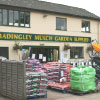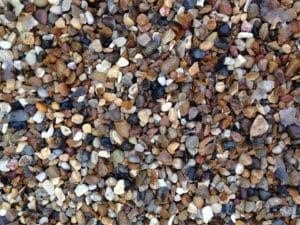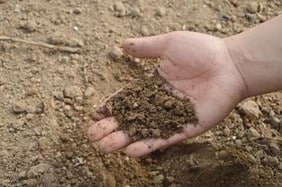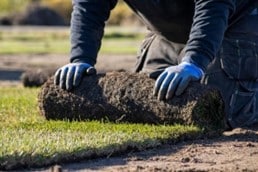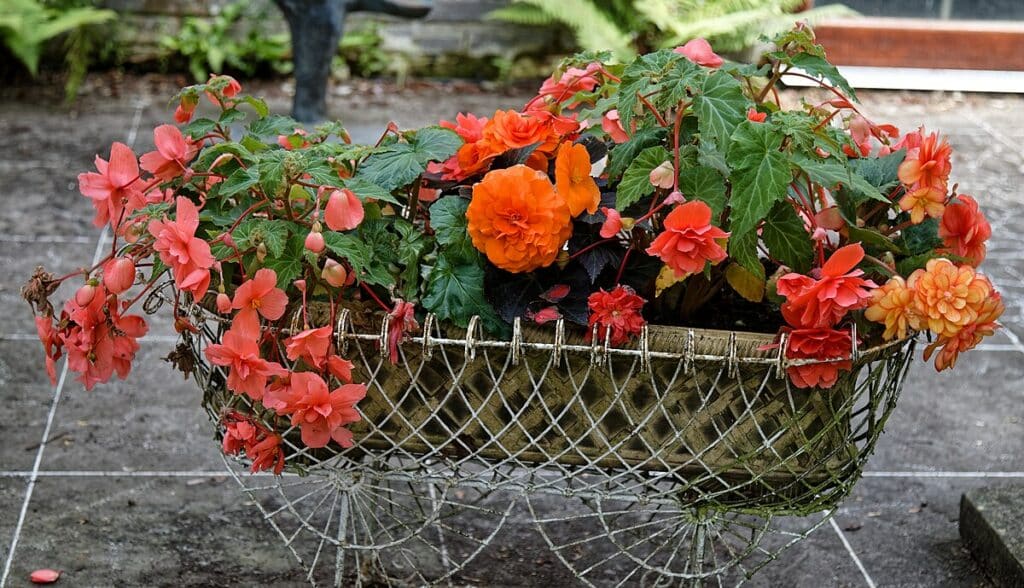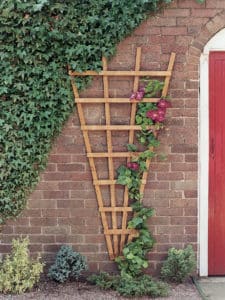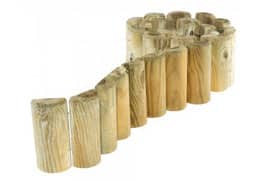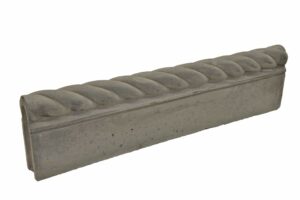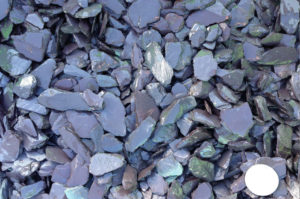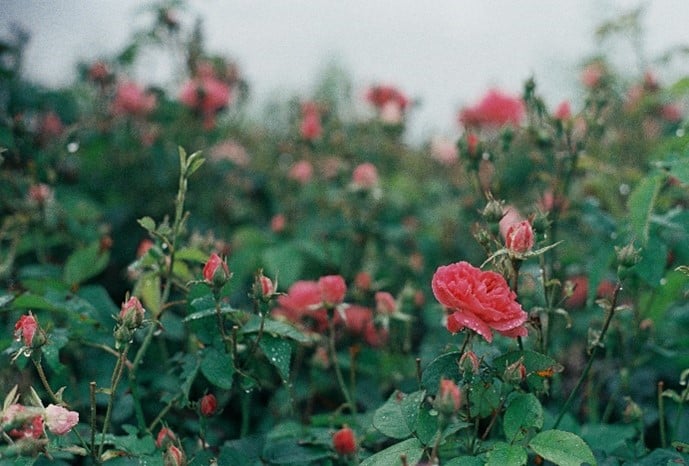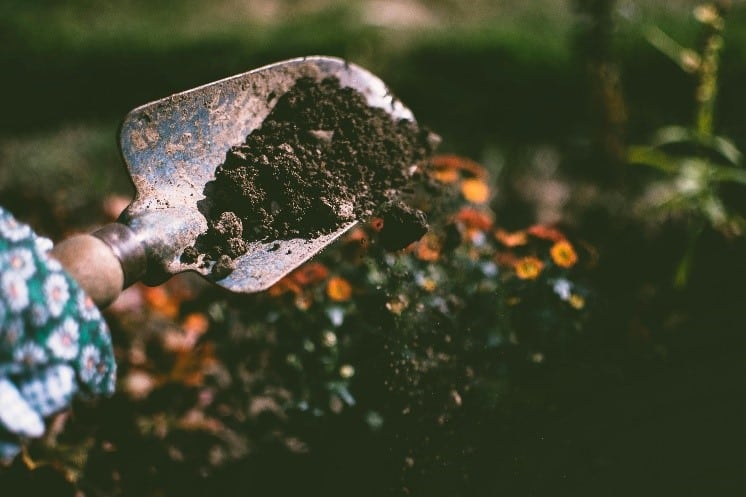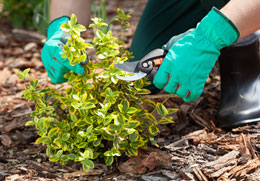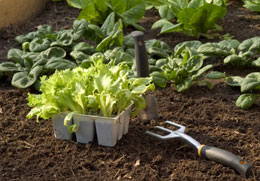Top Tips for Creating the Ideal Driveway
Driveways are an essential part of any modern home; they add value to it, as well as offer convenience and security to car owners. Here, Madingley Mulch, who supply driveway stones (and a host of other essentials) from our base near Cambridge have provided some top tips to ensure that the whole process is trouble-free.
Check with Local Planners
Depending on what type of driveway you are creating, you may need planning permission. This depends on access (that is, if it links directly onto a public highway), what materials you are using, and how big it is.
If it’s impermeable (rain doesn’t soak through) then you may also need to factor in the cost of a planning application. The idea behind this is to cut down the risk of flooding in an area. Impermeable materials include concrete, asphalt, and porcelain paving slabs.
However, if you are using permeable materials including gravel or other decorative aggregates, or some natural stones such as Indian sandstone, you may not need permission as the water should soak away naturally.
Talk to us or your local council about it as you don’t want to get into trouble if you don’t follow the rules.
Mark the Area Out
Wooden stakes and a string line will help when it comes to measuring out the area, or you could use a white spray if you are digging up some grass. When doing so, make sure you leave enough room for all the vehicles which are likely to use it (including passing spaces if required). If the driveway needs to be big enough to accommodate several vehicles, you might need professional help as there will be a lot of physical work involved.
Dig Out the Area
A spade or shovel to dig out the topsoil should be enough if the drive is for a single vehicle. However, an excavator may be necessary if it’s anything larger. You probably need to go down to 250mm deep if it’s going to be a solid driveway, or 200mm deep if you are going to lay decorative stones on top.
Either way, you will need enough depth to lay a sub-base, which is going to take the weight of your vehicle or vehicles.
Install Your Sub-Base
Type 1 stones are the best for this because of their load-bearing qualities. It will also be a good idea to break it all up and compact it with a plate compacter or whacker plate – it’s probably worth hiring this rather than buying one outright. In this case, make sure you invest in PPE – goggles, hardwearing gloves, ear protectors – while you use it.
Protect it Against Weeds
If your driveway is porous, it can easily be damaged by weeds growing through (apart from any structural problems, it looks unsightly). Therefore, consider laying down a weed-suppressing membrane which will stop weeds from growing up, but will still allow rain and moisture to trickle through.
Add Your Top Layer
Gravel or decorative stones (such as our 10mm gravel, above) are much easier to lay. This is because you can just pour them onto the top and rake them out to make them even. It’s also a good idea to give them a rinse with a garden hose to stabilise them and get rid of any dust and debris.
If it’s a concrete pour, you will have to make sure it’s evenly spread over the whole area as well as laying out wooden forms so the concrete doesn’t spill over into other parts of the garden. You will also have to wait for the concrete to set and be ‘cured’ to ensure it reaches maximum strength before you put any vehicles on it – this could take a couple of weeks.
If your driveway consists of paving slabs, it’s a good idea to wet their undersides before starting. Tap them into place with a rubber mallet to avoid cracking the slabs; and use a spirit level regularly to ensure the whole surface is even. The slabs should also be sealed – either with sand or a manufacturer’s special sealant or compound.
Don’t Forget to Edge It
Every driveway looks much neater and tidier if it is clearly defined – particularly if it’s with loose gravel or decorative stones, as you don’t want any gravel spilling out.
So consider laying down some decorative or formal edging which will keep the stones in place. This is because some smaller stones can easily be picked up by the soles of your footwear and end up where they aren’t wanted, such as on the lawn or in your home.
Driveway Stones in Cambridge from Madingley Mulch
At Madingley Mulch, we have all the ingredients you need for your driveway. These include:
- MOT Type 1 stones for your sub-base
- a range of paving slabs – some of which will be suitable for use as driveways (check with us if you aren’t sure)
- and if you’d rather your drive contained gravel or decorative stones, then check out our selection here – again, we can tell you which ones will best meet your needs.
We also stock driveway membranes at our base near Cambridge – these will help those unwanted plants from spoiling the look of your new drive, as well as decorative edging which can be used as a border for driveways as well as flower beds.
Lastly, if you want to make your driveway more sustainable, check out our previous blog post here. And, if you have any questions, you can always call us on 01954 212144.
Soil Types in the UK – a Handy Guide
The UK enjoys some of the most variable soil conditions in the world. The varied climate, plus the way the ground developed millions of years ago, mean that there are many different types of earth – which can produce very different growing conditions for gardeners across the country.
Here Madingley Mulch identify the six principal soil varieties, what plants grow well in which type, and how we can help make your soil more fertile thanks to the range of soil conditioners and improvers we stock at our base on the outskirts of Cambridge.
Chalky Soil
Chalk soils have a high alkaline content and may contain stones (or flints). In the UK these soil varieties are mainly found in areas with high deposits of calcium or limestone, such as the South Downs, the Yorkshire Dales, and the Chiltern Hills – not usually the East of England. They account for just 5% of all UK soil.
They are also very free draining and difficult to keep fertile. This means it may be better to stick to plants which thrive in this sort of earth – such as lavendula, geraniums and clematis – rather than trying to improve the soil.
Loam Soil
This is a fertile soil which is made up of organic matter mixed with clay, sand and silt. It is possible to have variations – for example, a sandy loam soil has higher proportions of sand, while a clay loam has more clay.
Loam soil is fertile, contains a lot of organic matter which provides essential nutrients to plants, promoting healthy growth and development. Additionally, loam soil has a balanced pH level, which further supports nutrient availability. It also promotes healthy root growth, is easy to work with, and is less likely to suffer long-term damage through high winds and storms – it’s a balanced soil where all the particles knit together well.
It is good for growing most plants, including vegetables and fruit trees – although sadly it’s not that common in Cambridgeshire and across East Anglia, even though it’s found in around a third of all the UK’s gardens.
Sandy Soil
This type of soil is found in around a fifth of the UK, and mainly in coastal areas. It should fall through your fingers easily and will also drain quickly after rain or watering. However, because it doesn’t retain moisture very well, you are best to opt for drought-tolerant plants (geraniums, buddleija, conifers and some fruit and vegetables) – all of these will need very little watering once they become established.
The other option is to improve the soil – organic matter such as leaf mould or tree bark will increase the alkaline content of the soil (it’s usually very acidic to start with), which will improve the growing conditions.
Silt Soil
Silt soils account for around 15% of the UK’s total, and they are mainly found in valleys and lowlands. Like sandy soils, they are quite light and can easily be damaged by heavy wind and rain.
You can either compact the soil by stepping on it or using a hand or machine tool; the other solution is to grow something in it. The best plants to grow in this type of ground are trees such as willow, birch and cypress, and most fruit and vegetables, if the drainage is good enough.
Peat Soil
This is found primarily in Scotland and the North and like chalk, is found in around 5% of the UK’s gardens. It is acidic, contains high levels of organic matter, and is very good at retaining moisture. Plants which grow well in this type of earth include rhododendrons, heathers and azaleas.
Clay Soil
Most soils in the East of England, including the Cambridge area, and around a quarter of the UK as a whole, are heavy in clay – usually at too high of a concentration to be considered a clay loam. Clay-heavy soil retains water and nutrients very well – in fact almost too well, as it’s slow to drain and prone to becoming waterlogged.
The best plants you can grow in it (without any artificial assistance) include roses, pears, plums and other similar flowering plants. Fortunately, though help is at hand – in the form of a variety of soil conditioners and improvers we stock at Madingley Mulch.
Checking Your Soil Type
You can buy a testing kit which will determine whether your soil is acidic, alkaline or neutral (and so which of the above categories it is likely to belong to). You can also do a ‘squeeze test’ – roll some moist soil into your hand and see how it behaves.
If it’s a clay soil, for instance, then it will form a sticky ball which will hold its shape. Sandy soil crumbles quickly and will feel gritty; silt soil will form a smooth ball and will crumble apart under any sort of force.
Soil Conditioners in Cambridge from Madingley Mulch
We stock 6mm horticultural grit, which will help break any clay soil down. Our spent mushroom compost and our two exclusive products, Tony’s Tonic and Denise’s Delight, will all help as they add valuable nutrients to the soil. For our full range of soil conditioners and improvers, click here.
And if you want to grow grass on top of your soil, then you should consider our lawn top dressing mix, which we supply in Hertfordshire, Essex and Suffolk as well as Cambridgeshire. This loam blend includes sharp sand and peat that will encourage grass, whether it’s being grown from turf or seedlings.
If you need to place a bulk order, remember we can deliver to you. Our regular areas include Newmarket, Huntingdon, Royston and Saffron Walden, but we can arrange for deliveries further afield. For more details, click here.
Advantages of Laying New Turf in Spring
Although new turf can also be laid down in the autumn, there are plenty of advantages to creating a fresh lawn during March and April – and preparation work should start before that. Here Madingley Mulch, a leading turf supplier in the Cambridge area, explain why you should really be thinking about it now if you want a lawn which is ready for summer use.
The Weather Should be Good Enough
First and foremost, check the forecasts because you want to avoid any sharp frosts which could damage the grass. You also want it to be dry enough to work outside for a day or two.
Don’t worry though if there are any April showers on the way as this could save you the job of watering the turf in the early days. However, if it is reasonably dry, then you should water it daily for between two and four weeks.
It Will Promote Root Growth
The milder conditions (and hopefully the right amount of moisture) will help the roots of the grass to become established before the harsher summer weather comes along. The soil itself will be warmer, which also helps promote root growth.
You Can Enjoy it in Summer
If you lay the turf in autumn, you then have to wait until the following year before you can fully enjoy it. However, by doing it in the spring, you should see a more immediate return on your investment as you and your family can enjoy it during the summer.
Doing the Groundwork – Why You Should Start Now
Before you even think about rolling the turf out, you should prepare the soil you are going to lay the turf on. This means weeding the soil thoroughly and turning or rotating it before digging in some well-rotted compost, mulch or soil improver, which we sell to customers in Essex, Suffolk and Hertfordshire as well as Cambridgeshire. These include our exclusive products Denise’s Delight or Tony’s Tonic.
Don’t be tempted to use any weedkiller, though, as residual traces of this could remain in the soil after you lay the turf, which could discourage healthy grass root growth. If possible, leave the soil to settle for several days – the longer the better. Also, get the soil level by walking across it in all directions (you can also use a spirit level as a check). Follow this by raking the top layer in all directions.
Once you have bought the turf, make sure you lay it quickly – ideally within 24 hours of purchase. This is because if it remains rolled up, it will quickly discolour and lose some of its strength.
Laying the Turf
Start in a corner and avoid stepping on the exposed soil – use planks or boards if necessary. Keep a bucket of soil to hand to add or remove soil as necessary to ensure the ground is level.
When it’s fully laid, spread a thin mixture of sand and soil or compost into any minor gaps – this helps the rolls knit together and establish quickly. Then water the newly-laid turf well and resist the temptation to walk on it because if you do this during the first few days. It is particularly important to do this if you are laying it in the spring – if you lay it in autumn the grass roots usually have more time to establish themselves.
Madingley Mulch – Turf Supplier in Cambridge
At Madingley Mulch we stock high-quality turf that has been grown locally in 1m rolls, which you can order here.
We offer you the choice of home delivery or you can come and collect it from us. In addition, we also stock a range of garden tools which could come in handy when you are laying your turf. If you have any questions, you can call us directly on 01954 212144.
Planning for the Year Ahead on Your Allotment
Allotments have seen a big boom in recent years, kickstarted by the recent coronavirus lockdowns, when they provided some much-needed outdoor therapy for people who might otherwise have been stuck indoors. And, of course, they help with increased cost of living, as they enable gardeners to grow their own fruit and veg.
The key to getting the most out of your plot is to plan ahead. Here Madingley Mulch, who offer allotment supplies to gardeners in Essex, Suffolk and our home county of Cambridgeshire; provide you with a month-by-month take at what should be your priorities for the coming year if you are growing your own.
February
This is the month you ought to start working over your soil, to prepare it for the growing season. While a trusty spade and fork will help drain and aerate the soil, you can give nature a helping hand with some organic matter such as mulch.
You may also be able to start the growing process in a propagator (for example, for artichokes and broccoli), equally if you planted them at the correct time (in the autumn) you may have some kale, lettuce or rocket which is now ready to be harvested.
March
The soil preparation process should continue, and this should be the month you tackle any weeds which have survived the winter. If you get on top of them now, they won’t be a problem for the rest of the year. Some seedlings can be sown now too, such as carrots, peas, radishes and broad beans.
April
This is the latest you can plant out asparagus and artichokes. Aubergines and tomatoes should be planted now too as they need a long growing season. All your potato seedlings should also be in the ground by the end of the month.
You may need to thin out some of the seedlings you originally planted last month if they are growing too close together. And keep weeding – particularly perennials such as brambles, nettles and thistles.
May
You can ‘earth up’ your potatoes this month (a process where you add some soil near the base as this will increase the length of underground stems that will bear potatoes – as well as smother any weeds).
If you planted any lettuce, spring onions, broccoli, cabbage, spinach or radishes in the early spring, then you can start harvesting and enjoying them now. You can also sow beans this month (either dwarf, climbing and runners), although you may need supports such as bamboo in place, particularly if the weather isn’t particularly good.
June
Some vegetables you can replant every month, these include beetroot, radishes and lettuce.
You can still plant out beans this month, as well as courgettes, pumpkins, squashes and sweetcorn.
Although you shouldn’t have to worry about frosts for a few months, the seasonal variations offered by Mother Nature may mean you have to start thinking about watering. Remember a good soak may be better than a sprinkle and prioritise anything that’s been planted out recently.
August
Lots of crops can be harvested in August, including carrots, runner beans, beetroot, globe artichokes, cucumbers, and courgettes. And you can still sow some vegetables – including lettuce (but keep them out of direct sunlight), rocket and spring onions.
If you are going on holiday, give your plants a really big soak before you go away (or get your neighbour to take on the job – they may also be able to harvest some fruit and veg while you are away).
September
Onions, potatoes, runner beans, and courgettes can all be harvested and eaten this month. You can also start thinking about sowing for winter and spring next year – such as leafy vegetables like spinach and spring cabbages, as well as broad beans and peas for early harvests next year.
October
This should be the month you harvest the last of any runner beans or courgettes you have planted, as well as (appropriately, given that it’s Halloween) any pumpkins which should have been planted in late May or early June. If your main crops have finished for the season, and the plot is relatively empty, then you may want to consider laying down some soil conditioners or improvers.
November
This is a good month for planting garlic, onions or shallots, although they may need some protection from the winter weather. It’s also a good time to prune any fruit bushes you have grown, as they will effectively be dormant until next year.
December
If you have planted any parsnips, leeks or winter cabbages then now is the time to harvest them – hopefully just in time for Christmas dinner. Should you have any fruit trees on your plot, now is a good time to prune them. It’s also a good month to make sure your tools are in good order, ready for the year ahead – cleaning them, oiling them and sharpening them (possibly replacing them too). It is well worth planning out the year ahead too.
Allotment Supplies in Essex from Madingley Mulch
At Madingley Mulch we have a comprehensive selection of products to help you all year round. We have a range of composts and soil conditioners which we stock at our Cambridge base. These include our exclusive products, Tony’s Tonic and Denise’s Delight. All of them will improve your soil’s quality and ensure you get full value from your plot.
Our online shop also has a range of high-quality garden tools, as well as metal builder’s barrows which should be strong enough to meet all your needs. If you have any questions, you can call us on 01954 212144.
There’s Still Time to Buy Your Christmas Tree from Madingley Mulch
If you are still looking for Christmas trees for sale in Cambridgeshire, then look no further – at Madingley Mulch we are stocking our usual range of Norway Spruce and Nordmann Fir trees.
The Nordmann fir is named after 19th century Finnish zoologist and botanist Alexander von Nordmann (1803-1866), who discovered the tree in Eastern Europe. It has a very glossy foliage and doesn’t shed its needles much, which will come in handy when you start clearing up in the New Year.
The Norway Spruce is an evergreen conifer which can grow up to 40m in height (although the ones we are selling aren’t that tall!) and will last for up to 1,000 years. It’s more of a ‘natural’ tree than the Nordmann, with a full green foliage which means it really smells like a Christmas tree. However, it is more prone to shedding its needles, so you’ll want to keep some slippers handy at home and be ready to get the vacuum cleaner out in the New Year.
Whichever variety you want, you can buy one at Madingley Mulch. For a full list of prices and heights, check out our seasonal offers page here.
Key Advantages of Using Dark Paving Slabs in Your Garden
Patios come in all shapes and style, not to mention sizes. There’s plenty to choose from when it comes to colours as well – whether you are looking at natural stone or porcelain slabs for your garden. Many people opt for a traditional colour such as sandstone, or a shade of brown or grey – but what about something darker, such as black?
Here Madingley Mulch, who supply black paving slabs from our base near Cambridge, look at the advantages of choosing a dark-coloured stone for your garden patio.
They Look Stylish
Although sleek and modern, dark paving slabs are still effectively a neutral colour, just as white (or lighter) colours are. This means they won’t detract from the colourful plants, furniture or anything else you put on the patio – see the above picture for some inspiration. They can be used to create a great contrast in your garden, adding depth and dimension to your outdoor space.
Dark colours (not necessarily just black) are often associated with modernism and minimalism, giving your patio a striking look that will really make it stand out. However, the darker colours also have a timeless appeal that will suit any garden and home.
You don’t have to go fully black, either – you could mix and match dark patio slabs with other, lighter-coloured slabs for a really striking effect or pattern. And dark slabs – just like dark paint in a room – can make your garden seem cosier (whereas light colours may make it appear more spacious).
They Show the Dirt Less
The darkness of the slabs means that, if there is any dirt on them, it won’t show up immediately. It also means that any imperfections, such as cracks and scratches, won’t show up as easily.
If they are part of a porcelain paving range, then they are low maintenance, slip-resistant and highly symmetrical, as they are produced in a factory. However, you should still sweep any debris such as leaves away regularly and it’s always a good idea to perform a good thorough clean once every few months. Warm water and a soft cloth or mop should also be effective; for a longer-term solution, try a pressure washer for a deep clean.
They are Climate-Friendly
Unlike white- or lighter-coloured slabs, darker patio slabs soak up sunlight and absorb heat very well, so this means they are ideal for colder climates or during the winter months and will mean you have to spend less energy and money heating your garden while you’re outside.
They are particularly good for areas which get plenty of sun, although bear in mind that you shouldn’t tread on them barefoot, otherwise you may be in for a painful surprise.
They Are Versatile
You needn’t restrict yourself to just using dark patio slabs on the patio – you can use them on paths and walkways, swimming pool surrounds, or as a base for firepits and chimineas.
The last couple of examples will really give your garden a night-time glow – and the dark slabs will absorb the heat from the flames while still remaining resistant to temperature changes – making them a great option.
Black Paving Slabs near Cambridge from Madingley Mulch
At Madingley Mulch, we can supply Cathedral Anthracite (pictured) – it’s part of our Avant Garde range of porcelain paving which we can deliver to customers in Cambridgeshire, Suffolk, Essex and further afield.
You can also opt for Mercury Grey, Himalayan White, Quartz Light Grey, Quartz White and Kandla Porcelain – you can check out the full range here – and remember we have plenty of natural stone varieties as well, including Indian Sandstone, Rutland Paving and Old Grey Courtyard Paving.
We appreciate that all slabs are heavy, particularly if you have a bulk order (although they are available as individually packed tiles), so we can deliver them across East Anglia. We now operate a sliding scale of charges; for more details see our deliveries page – basically the closer you live, the less you pay for delivery
You can also call us on 01954 212144 if you have any questions about our range of patio slabs, or any of our products.
Four Ideas for a Children’s Garden Area for 2025
Instead of buying your children some conventional Christmas presents this year, why not go for something more active and create a dedicated area for them in the garden? Here Madingley Mulch, who can supply play sand and bark for customers in and around Cambridge, come up with some cheap and cheerful suggestions which needn’t cost the earth (even though one or two of them do involve soil!).
Obstacle Courses and Racetracks
Many children love an element of competition when it comes to outdoor play. You can collect a load of different equipment and supply some stop watches so they can set up their own obstacle course in your garden.
It needn’t be too expensive – root out any old tyres, skipping ropes, a football, a plank of wood to balance on and a net to scrabble under. This is also a great way to get some use out of old items, and you can always rearrange the course to mix up the fun.
Old pillowcases are ideal for sack races for younger children and almost anything can be balanced on a to spoon to add an additional element of risk
And if you do want to go down the traditional route of slides and swings, laying down some play area bark – which we can supply to customers in Essex, Suffolk and out home county of Cambridgeshire will ensure that your children won’t hurt themselves if they do take a tumble.
A Vegetable Patch
Why not try letting your children grow their own vegetables in a raised bed? By creating a separate area for their agricultural efforts, it won’t affect anything else in your garden and is a great opportunity for children to learn more about plants and how to look after them.
A good sunny spot will make the best home for your raised garden, meaning that the seedlings will have the best chance of sprouting. Prepare the surface underneath by clearing away debris and ensuring the ground is level. You can position garden beds on the lawn, soil and even concrete areas (although if you’re working on concrete, add some drainage with a layer of gravel before putting your bed into position).
Another great idea is to let your children add some character by painting the sleepers. Our softwood and sawn oak sleepers make for ideal raised beds and have a whole host of other uses too, including steps, terraces and decks.
To give their plants a helping hand, we exclusively stock Denise’s Delight, our specialist product which combines the benefits of soil and compost. Its mix of plant nutrients (including fen soil and horse manure) should give the seedlings every chance of success as it works particularly well in raised beds.
Also, they don’t have to grow fruit and veg – they could grow flowers as well, as pictured above. The Royal Horticultural Society recommends hardy annuals such as sunflowers, poppies and pot marigolds, as they all germinate quickly and are easy to grow from seed.
A Back Yard Beach
In the summertime, you don’t have to go all the way to the coast to have fun – play sand is a more than adequate substitute. Add in buckets and spades and some water to recreate the seaside experience at home! (Ice creams and fruit drinks are optional extras)
At Madingley Mulch, we can supply play sand which is free of stones and does not stain – so you shouldn’t have to worry about your youngsters injuring themselves, or ruining their clothes.
Create a Wild Area
For a taste of the ‘wild’ in your play area, revive a neglected corner by letting everything grow naturally. You can also encourage your children to make their own bird feeders or set up a wormery.
Carefully-constructed piles of rocks, bricks, logs, twigs and leaves will attract beetles, spiders, and all sorts of other creatures which make a vital contribution to your garden’s eco-system – so you will again be teaching your children about the natural world with plenty of play.
Play Sand in Cambridge from Madingley Mulch
All these products and many more are available by clicking on this link and browsing our online shop.
If you have any questions about any of them, then feel free to call us on 01954 212144. If you can’t fit some of the bigger items into your car, don’t worry as we also offer a delivery service. It operates on a sliding scale so it’s cheaper the closer you live – for more details follow this link. The current lead time for deliveries is between 3-8 days from placing our order.
Five Key Advantages of Using Trellises in Your Garden
Garden trellises have been around for thousands of years. Originally, they took the form of pergolas or arbors and were the preserve of the very wealthy, particularly in France and Italy.
Over the years, however, they have evolved into a variety of simpler shapes and are much more affordable and more widely available. Here Madingley Mulch, who supply a variety of garden trellises to customers in Cambridge and the surrounding area, look at the advantages they offer.
- They Maximise Space
Trellises are particularly useful if space is at a premium in your garden, as they allow you to grow plants upwards or vertically rather than horizontally. This is particularly true for trailing plants like roses and ivy. The structures also help train fruit and vegetables such as cucumbers, tomatoes and beans.
One helpful side-effect of this is that it will free up space in the rest of the garden, whether you want to use the space for relaxation or growing more plants.
- They Make Pruning and Harvesting Easier
Trellises don’t just make it easier to grow fruit and veg, they also simplify the task of picking or harvesting them as well, once they are ripe. Due to the verticality of trellises, everything should be in plain view. Similarly, pruning back plants in autumn and winter should be much easier too, as you don’t need to bend down and cut back stems through lots of other foliage.
- They Promote Healthier Plant Growth
It’s worth noting that trellises also make for healthier plants, as air can flow freely around the foliage. This helps prevent disease in the plants, particularly of any fungal varieties.
And, if they grow upwards, your plants should get plenty of of exposure to sunlight – again, this should also lead to better growth (and better yields for your fruit and vegetables).
- They Improve Security
At first glance, this might seem an unusual advantage – after all, trellises are full of holes and you can see through them – but they do have a number of advantages when it comes to home and garden security. For instance, you can grow prickly plants such as roses up and through the trellis – and these could deter would-be intruders.
You can also feed electric outdoor lighting through the gaps as well – and light has a proven deterrent value when it comes to combating crime (and the lighting itself will ensure you get more use out of your garden, even when the nights start drawing in). And, when put on top of conventional fence panels, the trellises add extra height to your property barrier which could also discourage thieves.
- They Look Good
Trellises will add plenty of visual interest to your garden, however you use them. As well as plants or lighting, you could also fix seasonal decorations to them (such as at Halloween, Christmas or Easter). And trellises don’t have to be regular shapes either – they could be fans which you can attach to a wall.
You could also use the structures to separate off distinct zones in your garden – for instance, child-friendly and wildlife-friendly areas. If you use fence panels, one (unlike the solid barrier provided by fence panels
Garden Trellises in Cambridge from Madingley Mulch
At Madingley Mulch, we can supply different garden trellises in a variety of different sizes; for a full breakdown, follow this link. There’s also a fan option as well (pictured above).
If you are thinking of buying new fencing at the same time, then we are one of the leading fence suppliers in the Cambridge area as well – for more information about our current items click here. We stock lap panels, posts and a variety of accessories.
Delivery Details
A big order of trellises (and fencing) can be quite difficult to fit into your car. However, at Madingley Mulch we can deliver them to you provided the value of your order comes to at least £50. We deliver to St Ives, St Neots, Newmarket, Ely, Huntingdon, Cambridge and the surrounding villages.
We are now operating a sliding scale of charges, with a £2 fee per delivery unit if you live up to five miles from our base, up to £16 per delivery unit if your address is between 30 and 40 miles away. For more details check out our delivery page here. If you live more than 40 miles away, please contact our shop staff on 01954 212144 for a tailored delivery quotation.
How to Give Your Garden a Real Edge
Autumn is the right time of year to be thinking about giving your garden a real edge – literally!
Madingley Mulch can supply edging stones and log roll lawn edging from our base near Cambridge. Here we explain why creating clearly defined boundaries is so beneficial, and also provide a few tips on how to ensure your edging looks good – and is built to last.
Why Edging is So Useful
Any form of edging will create clearly boundaries in your garden, and they will give the impression of neatness and order. They can also be attractive features in their own right.
Edging has practical as well as aesthetic benefits. It encourages people to walk in certain areas – that is, to stick to the pathways or driveways, rather than treading in any flower beds (and potentially damaging your plants).
There are practical benefits too; the stones (or logs, pictured below) will ensure that soil or mulch from your beds won’t spill over onto your lawn after a heavy shower, and it works in the other direction too, as the edging will stop grass and weeds from growing into the beds.
How to Go About It
The mild, damp conditions of autumn mean that it’s the ideal time for this type of garden project; the soil should be easy enough to dig out and we are past peak growing season, so you are less likely to damage any flowers.
Measure the area of lawn or flower bed you want to dig up with marker spray or string (you may need stakes if you want a curved border). For added neatness, trim the edges of any grass with shears.
Next, dig the trench into which the edging will fit into. A half-moon edger is a better tool option here, rather than a spade, as the former is specifically designed for jobs such as these.
The exact depth you dig down to will depend on the height of your edging, and how much you want to be visible; although it’s generally best if at least half of the edging is above ground.
Kerb stone edging, above, will benefit from being embedded in a mortar concrete bed. If you opt for log rolls, you could have some additional marker pegs to provide additional stability. The logs can be hammered in (not too hard) with a rubber mallet.
Finally, use a spirit level to check everything has been laid evenly. Any soil which you dig up for the trench can be used as infill after you have finished installing the stones or logs, or alternatively it can be used as compost.
Kerb Stone and Log Roll Edging in Cambridge from Madingley Mulch
Madingley Mulch’s garden edging stones – which we can supply to customers as far afield as Hertfordshire and Norfolk, as well as in our home county of Cambridgeshire – are available with either round tops, brindle rope tops or charcoal rope tops.
Our log roll edging comes with flexible galvanized wire backing for straight and curved edges, and is pressure treated for long life and guaranteed for 10 years against rot.
We also stock a range of paving slabs and decorative stones for paths, patios and driveways if that’s what your edging is going up against.
And if you are using your edging to separate your flower beds from your lawn, we also supply a wide variety of soil conditioners and composts which will help your plants to flourish. These include our exclusive products Tony’s Tonic and Denise’s Delight. Both contain horse manure and other valuable plant nutrients which mean both of them make an ideal mulch.
You can also call us on 01954 212144 if you’d like any friendly, professional advice.
Key Advantages of Using Slate in Your Garden
If you have a home improvement project on the go, then slate is one of the most versatile of stones you can use. Roof tiles, bases for snooker tables, counter tops in the kitchen, fire hearths, even tables and chairs – the list is almost endless. And that’s before you consider how you can use it in your garden as well.
Madingley Mulch supply a range of slate chippings for gardens in Hertfordshire, Cambridgeshire and across East Anglia. Here we look at how slate is formed, the uses you can put it to in your garden – and how you should prepare the area before you lay any chippings down.
How Slate is Formed
Slate is a fine-grained, foliated, homogenous metamorphic rock. This is created from a shale or mudstone sedimentary rock. This sedimentary material forms a shale which is typically composed of clay, volcanic ash and quartz, with a small percentage of other minerals.
The colour of your slate chippings is determined by the amount and type of iron and organic material present in the rock. Converting the slabs of slate into chippings is usually achieved by using heavy-duty machinery to split it, then crush it into specific sizes and grades.
It’s Extremely Versatile
Slate has a range of uses in your garden. Instead of using paving slabs, you can use the chippings on your paths and driveways. This will certainly make the area stand out from any surrounding flower beds (or the lawn); and the crunch they make underfoot will warn you of any visitors.
The chippings can also be used as a mulch – they can help to suppress weed growth by blocking sunlight and making it difficult for weeds to take root in your garden. They will also keep the soil relatively cool. However, the chippings won’t naturally improve the soil in the same way that other conditioners do.
Slate can also be used in water features – such as a waterfall, or in a pond – its qualities mean it won’t erode rapidly despite the constant contact with water.
It’s Low Maintenance
Slate chippings are ideal for a gardener who hasn’t got much spare time, but still wants to create a different look. They won’t need mowing, cutting or pruning. They are also much lighter and easier to lay than some of the alternatives such as paving slabs.
Slate won’t need replacing or replenishing as regularly compared to other soil conditioners and composts; it’s also pet- and animal-proof, compared to many other garden aggregates and mulches. Birds won’t be digging it up to get at worms and insects, and cats won’t be tempted to use it as a personal toilet.
And the chippings, if laid to a sufficient depth, should be heavy enough to withstand any strong winds and so they won’t be picked up and deposited in another part of the garden during storms.
It’s Very Striking
Slate chippings look great in any setting – and there’s usually plenty of colours, sizes and textures to choose from as well. Even in extreme weather (particularly heavy rain) they won’t deteriorate – and it usually goes a slightly darker hue when it’s wet.
Preparing the Area
There are a few steps you should take before laying down any slate chippings. First, dig out any weeds and remove any debris from the area, then rake the soil out. If you are creating a new path or driveway, or any area which is likely to have a significant amount of footfall, you should dig down to a depth of around 10cm. This will give you the depth to lay down a sub-base of crushed stone or gravel.
If your chippings aren’t going to be walked on much (for instance if you are using it as a flower bed mulch) then you only need to dig down to around 5cm. However, it may be worth purchasing a weed suppressing membrane before you lay the chippings on top.
As a final step, make sure your chippings are spread evenly by raking them out.
Slate Chippings for Gardens in Hertfordshire from Madingley Mulch
At Madingley Mulch, we stock blue, green and plum-coloured slate chippings in either 20mm or 40mm sizes (the smaller of the two sizes may be a better choice if the chippings are likely to be walked on regularly). To check out our prices, follow this link.
We also stock weed suppressing membrane at our Cambridge base – as well as garden edging stones if you want to ensure that the chippings stay within the flower bed or driveway. And if you need a sub-base, we stock MOT Type 1 aggregates, which should be suitable for whatever you are using your chippings for.
Organic Mulch or Decorative Stones – Which is Better for Your Flower Beds?
To give your plants the best chance of surviving and flourishing, it’s a good idea to put some form of protective layer in the beds. As experts when it comes to garden bark in Essex, Cambridgeshire and across East Anglia, we at Madingley Mulch know that two of your main choices are either an organic mulch such as bark, or some decorative stones. Here we look at their respective advantages of the two alternatives.
Advantages of Bark
Bark is a natural solution – not only will it retain moisture in summer, allow rain to penetrate the beds in winter, and deter weeds all year round, it will also improve the structure of your soil. It’s also very easy to work with and lightweight compared to some decorative stones, larger stones in particular, so installing it won’t be so difficult.
You don’t have to worry about natural debris, such as leaves and dirt, spoiling the look as to some extent they are already part of the mulch and will blend in. It’s also cheaper than many types of decorative stones – and you won’t need to buy any extras such as an extra base layer of aggregates.
Bark will also help the plant roots cope with temperature extremes, whereas some decorative stones can make the beds much hotter, as their surfaces will absorb more heat.
Advantages of Decorative Stones
Despite our name, at Madingley Mulch we also supply many different types of decorative stone in Cambridge and the surrounding area and can vouch for its advantages.
Decorative stones won’t need replenishing as often as a bark mulch (which should ideally be replaced every year). This means stones are an ideal choice for someone who is pressed for time and is after a relatively low-maintenance garden.
There are also plenty of different varieties to pick from when it comes to the size, colour and shape of your stones. The same is also true of mulches, but the differences aren’t so marked; the net result is that a decorative stone layer for your flower beds will look much more striking, and make your garden really stand out.
Decorative stones have some of the same essential properties of a bark-based mulch; for example they will still help prevent weeds from poking their unwanted heads through. It also won’t matter so much if people tread on the stones – you won’t be damaging the soil and there’s less chance of getting the rest of the garden (and house) dirty. And heavier stones are less likely to blow all over the rest of the garden.
They also have very strong utility and can be used in other parts of the garden too, as pathways or driveways.
Decorative Stones and Garden Bark Mulches from Madingley Mulch in Cambridge
So, it may be down to personal choice and how much time you have –- although It’s worth noting that the commonest soil type in the East of England is a clay mixture – and the Royal Horticultural Society says that an organic mulch (such as bark) may be a better option because of the improved drainage it offers.
But whichever one you choose, at Madingley Mulch we stock both types of products.
For our range of decorative stone chippings, follow this link – there’s plenty to choose from with a wide range of colours, shapes and sizes. We also stock a range of mulches and composts. These include our exclusive products, Tony’s Tonic and Denise’s Delight.
And, whatever type you opt for, we’d also recommend some kerb edging stones which will keep the stones or mulch where it belongs – in the flower beds.
We realise that a big order – for either stones or mulch – is going to be heavy work, even if you can fit it all in your car. Check out our deliveries page to find out how we can help you get all your materials home safely.
How to Improve Your Garden’s Soil
One of the principal ways of ensuring you get full value out of any flowers, shrubs, fruit and vegetables you plant in your garden is to ensure that you know what soil type you have – and what you can do to improve it – and, as a consequence, the growth of your plants.
Madingley Mulch, suppliers of soil conditioners in Hertfordshire and Cambridgeshire, look at the main soil types found in the UK, what sort of plants they are most suitable for, and what you can do to improve your growing conditions.
Clay Soils
Clay soil is the main type of soil found in the East of England (where most of our customers are located). You will know you’ve got clay in your soil if you can roll it into a sausage shape between your fingers without it breaking up.
Sadly, it’s not ideal for growing many different types of plants because it has a rather sticky texture. It retains water so well it’s easy for some species to get waterlogged. Without any treatment hydrangeas and hardy geraniums do well in this type of soil, if you don’t want to add anything to it.
However, the best course of action to treat the clay soil is to add some organic mulch – this will break down the clay into smaller particles, making the nutrients more readily accessible to your plants’ roots.
This also makes the soil more easily workable and less likely to suffer from compaction, which is a bad thing because it means the air spaces are much smaller. Air spaces in the soil are essential for good drainage, and the movement of gases and plant roots (the roots suffer because they tend to be much shallower).
Sandy Soils
As you might expect, sandy soil has a gritty element – it should fall through your fingers easily. It will also drain quickly after rain or watering. However, because sandy soils don’t retain moisture very well, there are two steps you can take.
One is to opt for drought-tolerant plants, such as geraniums, buddleija, conifers such as cypress trees or fruit and vegetables such as rhubarb, chard and asparagus – all of these will need very little watering once they become established.
The other option is to improve the soil – organic matter such as leaf mould or tree bark will increase the alkaline content of the soil (it’s usually very acidic to start with) which will improve the growing conditions.
Silt Soils
Silt soils are quite similar to sandy soils in that they are quite light – they have a slightly slippery, soapy texture and can easily be damaged by heavy wind and rain, particularly if they form an external crust.
You can either compact the soil by stepping on it or using a hand or machine tool; the other solution is to grow something on it.
Silt soils are more fertile than sandy soils, so this should be relatively straightforward – but again it’s a good idea to add some mulch as this will bind the soil together. The best plants to grow in this type of ground are trees such as willow, birch and cypress, and most fruit and vegetables, if the drainage is good enough.
Loam Soils
Loam soils have a mixture of all the above soil types’ characteristics. It has a crumbly texture and is known as ‘the gardener’s friend’ – it keeps moisture well, has a good mix of nutrients, and warms up quickly in the spring.
The best plants to grow in a loam soil include most fruit and veg, such as tomatoes, green beans, cucumbers and strawberries – but you should be able to grow most plants in it without too much help.
However, it is still worth adding a mulch to the soil, particularly if you are replacing the plants every year (or growing fruit and vegetables in it) as you will be removing some of the nutrients when you cultivate it. It’s also important to note that some loamy soils may contain stones, so take care when you do your cultivating and harvesting.
Chalk Soils
Chal soils have a high alkaline content thanks to the presence of the chalk in the soil. In the UK these soil varieties are mainly found in areas with high deposits of calcium or limestone, such as the South Downs, the Yorkshire Dales, and the Chiltern Hills – not usually the East of England.
Like the loam soils, they may well have stones (or flints) in them. They are also very free draining and difficult to keep fertile. This means it may be better to stick to growing items which thrive in this sort of soil – such as lavendula, geraniums and clematis – rather than trying to fertilize the ground.
Madingley Mulch – Bark Mulch Suppliers in Cambridge
The one common denominator with all these types of soils is that (with the possible exception of chalk soils) they can be improved with an organic mulch or soil conditioner to help improve plant growth and produce yield.
This is where we at Madingley Mulch come into our own – as our name suggests, we are specialists when it comes to mulch, supplying it and other types of soil conditioners in Hertfordshire, Cambridgeshire and around East Anglia.
These include various types of barks, mulches and soils, conditioners and composts.
You can also call us on 01954 212144 if you need any help.
How Madingley Mulch Can Help Improve Your Clay Soil
Keen gardeners know how much type of soil can vary greatly between regions, and this in turn affects how easy it is to cultivate certain plants. One of the biggest problems gardeners in the East of England face is the clay soil – it’s a sticky substance which means that it can be difficult to grow many different types of fruit, vegetables, and flowers.
Here Madingley Mulch, who supply bark chippings in Essex, Cambridgeshire and across the East of England, explain why it’s a problem and the various steps you can take to mitigate its effects.
Clay Soil Characteristics…
Although there are other soil types in the East of England clay is by far the commonest. You will know if you have a clay soil in your garden or allotment if it feels slightly sticky or dense between your fingers. You can also roll it into a ball, or a sausage shape, and it won’t crack or break up.
The key characteristics of clay soil is that it holds water well and is usually rich in plant nutrients. Although it can be a problem for some, some species of plants (such as roses and other climbers, and some trees and shrubs) thrive in this type of soil.
…and Problems
However, on the flip side, clay soil is usually heavy to dig and cultivate, and it drains slowly after rain. It also warms up slowly as summer approaches, leading to delayed plant growth and ‘workability’. If you walk on the soil, or work with it when it’s wet, you’ll do a lot of damage to its structure (and probably create a lot of puddles which will take a long time to drain away).
Annuals, bedding plants, and some types of soft fruits (raspberries and strawberries, for instance) are best avoided unless you take steps to improve the soil.
What Can You Do About It?
The Royal Horticultural Society has outlined a series of steps which you can take if you have clay soil in your garden;
- Don’t dig into it or walk on it until autumn or early winter – then leave it until at least mid-spring because the chances are it will be too wet.
- Avoid planting too early (unless you have a raised bed – as this will improve drainage, and you won’t be walking on it).
- And finally, use plenty of organic matter, such as manure or composted bark, as this will improve the working properties of the clay soil.
Specifically, when it comes to some trees, shrubs, and other permanent plants, use plenty of organic mulch around the base (although not actually touching the plant itself).
Bark Chippings in Essex from Madingley Mulch
This last area is where Madingley Mulch are specialists. We supply a wide range of mulches, barks, composts and soil conditioners from our Cambridge base which will help you improve your growing conditions – particularly if you fancy growing bedding plants and annuals.
Among these are our range of barks – these can be used as mulches and flower bed coverings, as well as for play areas and for paths if you haven’t got time to lay paving slabs. We also supply two exclusive products, Denise’s Delight, ideal for use in raised beds, and Tony’s Tonic, great for growing roses and for use as a winter mulch.
If you would like to know more, you can call us on 01954 212144. You can either collect your order from us, or have it delivered – we operate a sliding scale of charges depending on how close to you are to us. Click here for more details.
Why Sand is a Great All-Purpose Addition to Your Garden
Sand isn’t just something you build castles out of on a visit to the seaside. It can form an integral part of your garden too – although you have to be careful to pick the right type depending on what you want to use it for.
Madingley Mulch supply children’s sand – and many other types – to customers in Suffolk and across East Anglia; here we explain how sand is formed, and some of its key varieties and uses.
How Sand is Formed
Sand is formed when rocks break down from weathering and erosion – this process can take thousands and millions of years. The rocks travel down rivers and streams, eroding along the way due to the currents and colliding with river banks and other rocks, until they finally reach the ocean, when they are eroded still further due to waves and tides into the sand we see on beaches around the world.
The tan colour which these particles have is down to the presence of iron oxides in sand;, these substances are not fully broken down by the process of erosion.
Building Sand
Because of its innate strength (the rocks it originally came from) sand has plenty of uses in the construction sector. It helps provide strength and stability to other materials and also can be used on its own.
The other materials include ballast (which also includes sharp sand and graded gravel, and can help where concrete is needed in any project) and cement. You can also get different types depending on how fine the particles of sand are – for instance the aforementioned sharp sand can be used for a bed for patio and paving slabs, while soft sand can be used to mix mortar if you are building a brick wall or laying down some stone slabs.
Children’s Play Sand
There are plenty of studies which show how youngsters benefit from playing with sand – it helps their motor skills, their hand-eye co-ordination, their muscle development and their imagination and creativity – and let’s be honest, who doesn’t love building a good sandcastle?
It can also help with their social skills if they are sharing the sand ‘space’ with one or more other youngsters (either friends or family). However, you need to ensure that the sand is relatively fine, so they won’t hurt themselves playing in it.
At Madingley Mulch, our play sand is free of stones and is also stain free – meaning that a playtime sessions create problems for your washing machine or your children’s clothes.
Get Your Aggregates from Madingley Mulch
At Madingley Mulch, we don’t just supply all these types of sand, but a complete range of aggregates as well so we can effectively act as a one-stop shop for all your garden construction projects – whether you’re looking to lay patio slabs or set up a play area for your children.
Our range includes gravels, stones and drainage aggregates and sub-base aggregates including hardcore.
If you are interested in buying any of these just click on the above links and order them from our online shop; if you want any more information, you can call us on 01954 212144.
And We Can Deliver to your Door Too
We appreciate that sand – even the softer or finer mixtures – as well as the aggregates can be quite heavy and difficult to take away from our Cambridgeshire base, so we also offer a delivery service as well.
We now operate a sliding scale of delivery charges, from £2 per delivery unit if you are less than five miles from our Cambridge base, to £15 per unit if you are 30-40 miles away – and we can deliver even further away as well (call the number above for more details). The current lead time on all orders is between one and seven working days.
So we can act as your aggregate suppliers in Bedfordshire, Hertfordshire, Suffolk, Essex as well as our home county of Cambridgeshire.
Compost – How it Works and Why You Should Use It
One of the most important ways of improving your garden is by adding some compost to the flower beds. Compost will improve your plant’s growth and overall health by providing valuable nutrients, will conserve water and discourage weeds from germinating. But what exactly is it, and how does it work?
Madingley Mulch supply compost to customers in Suffolk, Essex, Hertfordshire, Bedfordshire and our home county of Cambridgeshire; here we explain some of the finer points of this garden staple and break down the differences between soil conditioners and compost.
What is Compost?
Compost is defined as ‘a decayed mixture of plants and other organic materials that is used to improve the soil in a garden’. These materials can include plant trimmings, vegetable waste, and even paper, wood chips, eggshells and teabags.
As well as improving your soil and helping your plants grow, compost is also extremely environmentally-friendly – it avoids the use of peat, which can release carbon when it is extracted from its natural habitat (for more details check out our previous blog here), so it’s a great option for those looking to both improve their garden’s growth and also lower their carbon footprint.
Creating your own compost heap is also a great way of recycling materials like those listed above – it means that a lot of rubbish need not go into your waste bin or end up in landfill.
How Does Compost Work?
As the material begins to decay, bacteria and fungi break down the materials in the compost heap. During this process the compost will heat up to around 140F (60C); once this process is complete it will cool down. Small creatures such as worms and insects will then break down the harder material.
The compost can eventually be spread onto the soil which will absorb the nutrients still present in the compost such as potassium, phosphorus and nitrogen. Compost is particularly beneficial for plant roots.
The whole process of creating your own compost takes between two months and a year, depending on a variety of factors. The volume of material, the time of year, the temperature, the thickness and density of the material and how often you turn it can all factor into the time it takes for the compost to form.
If you don’t want to wait that long, then you can buy it ready-made from us – this has the added advantage that it has been tried and tested (and different ones can be used for different soil types or growing conditions).
The Difference Between Soil Conditioners and Compost
Soil conditioners and composts are different products, although both of them can benefit both your soil and your plants’ growth.
The former improves the soil’s structure whereas the latter adds nutrients. Compost also improves moisture retention, so you don’t need to water your garden as often (and it helps provide a home, and food, for the various creatures in your garden).
Soil Conditioners and Compost in Suffolk from Madingley Mulch
At Madingley Mulch, we stock a range of composts; these include our spent mushroom compost, which contains horse manure and composted straw; this is particularly good at breaking down the heavy clay soils which are common in East Anglia.
Our specialist product, Denise’s Delight, combines the virtues of both compost and soil conditioner, as it contains both Black Fen soil as well as horse manure and other plant nutrients.
We also supply and deliver soil conditioners – for instance the lawn dressing which we stock at our Cambridge base is a soil conditioner which will smooth over the surface of the grass, protect it during the winter months as well as improving drainage and overall soil quality.
For a full breakdown of all the soil conditioners and composts we can deliver to customers in Suffolk and across East Anglia, click here.
If you can’t make it to our base on the outskirts of Cambridge, then we can deliver it to you – for more details check out our delivery page here. You can also call us on 01954 212144 and we will be happy to give you advice.

